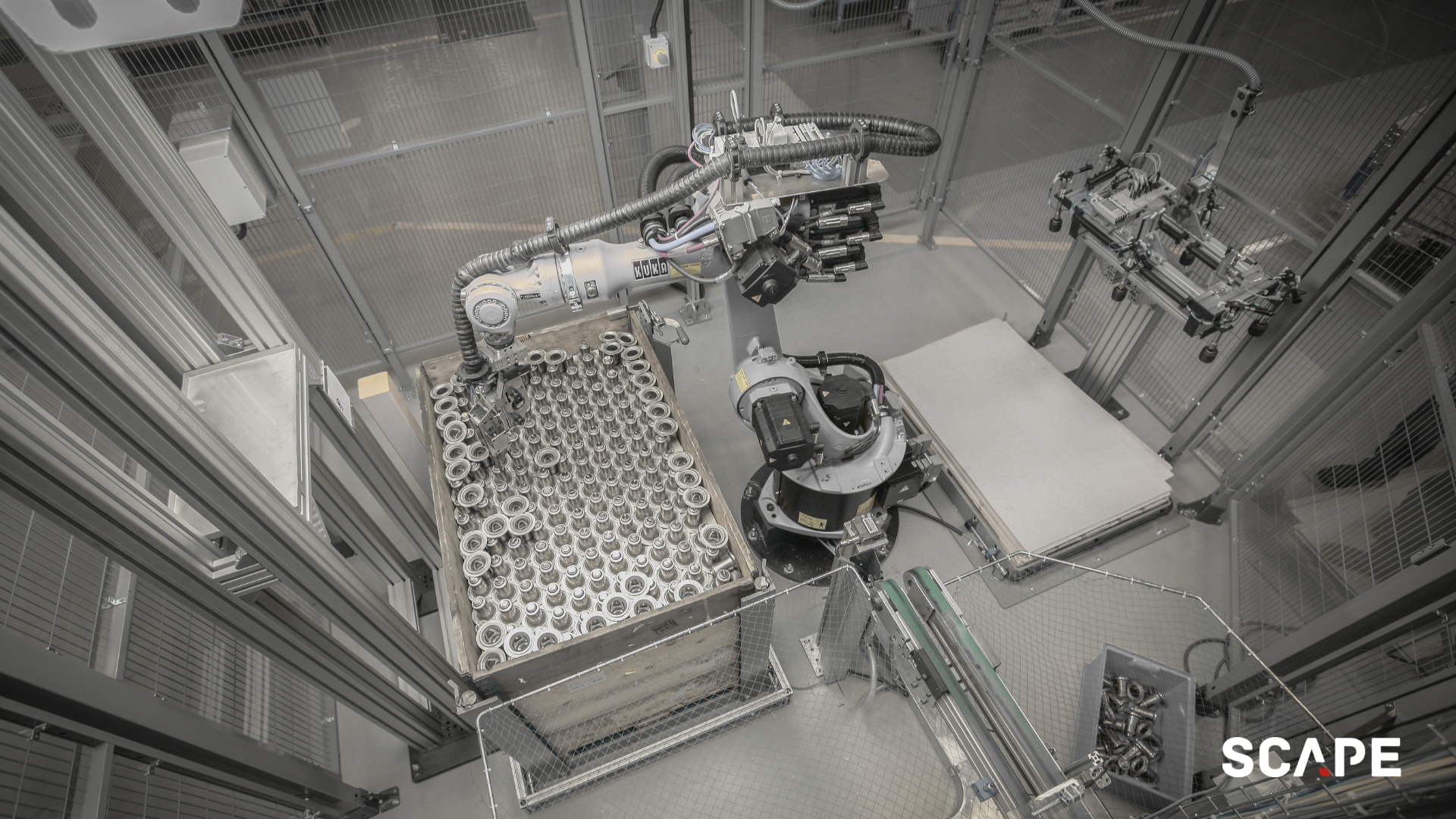The Evolution of Industrial Automation in Manufacturing
July 05th, 2023

by Bogdan Tintescu, Marketing Assistant, Scape Technologies
Introduction
In this article, we delve into the fascinating history and evolution of industrial automation in manufacturing. Over the years, industrial automation has revolutionized the way goods are produced, enabling greater efficiency, productivity, and precision. We explore the key milestones, technological advancements, and the impact of automation on various industries. Join us on this journey through time as we uncover the remarkable progress that has shaped the manufacturing landscape.
Early Beginnings: The First Steps towards Automation
Industrial automation traces its roots back to the early 18th century when mechanical devices were introduced to streamline production processes. The industrial revolution paved the way for groundbreaking inventions such as the spinning jenny, steam engine, and power loom. These innovations marked the initial steps towards automating labor-intensive tasks and introduced a new era in manufacturing.
The Advent of Programmable Control Systems
In the mid-20th century, the emergence of programmable control systems brought a significant shift in industrial automation. The development of electronic relay systems and numerical control machines laid the foundation for more advanced automation technologies. These systems allowed manufacturers to automate repetitive tasks, enhance precision, and improve overall efficiency.
Computer Numerical Control (CNC) Revolutionizes Manufacturing
The introduction of Computer Numerical Control (CNC) in the 1950s marked a milestone in industrial automation. CNC systems enabled manufacturers to control machine tools through computer programs, eliminating the need for manual operation. This breakthrough led to improved accuracy, faster production cycles, and reduced human error. The widespread adoption of CNC technology transformed various industries, including automotive, aerospace, and electronics.
The Rise of Robotics and Artificial Intelligence
The integration of robotics and artificial intelligence (AI) in industrial automation opened up new horizons for manufacturing. Robots capable of performing complex tasks with high precision became increasingly prevalent. AI algorithms empowered these robots to learn and adapt, further enhancing their capabilities. From assembly lines to warehousing, robotics revolutionized the manufacturing landscape, increasing productivity and ensuring consistent quality.
The Future of Industrial Automation
As the market for robotic automation solutions continues to increase, the next step for automation will probably involve the development of more accessible and easy-to-use solutions that are tailored to the needs of businesses of all sizes. This may involve the development of more standardized products and solutions that can be easily integrated into existing manufacturing processes and systems, regardless of the shortage of skilled robotics engineers and integrators that we currently face. Additionally, advances in artificial intelligence may enable automation solutions to become even more intelligent and adaptable, allowing them to better optimize productivity and quality while also reducing costs and improving efficiency. Overall, the next step for automation is likely to involve a continued focus on making automation more accessible, affordable, and adaptable to the needs of businesses of all sizes, while also leveraging cutting-edge technologies to unlock even greater levels of efficiency and productivity.
See our Scape Mini-Picker solution for industrial automation in action:
Conclusion
The evolution of industrial automation in manufacturing has been a remarkable journey, revolutionizing the way goods are produced. From the early mechanical devices to the integration of advanced technologies like robotics and artificial intelligence, each phase of automation has ushered in new possibilities and efficiencies. As we look towards the future, the potential for further advancements in machine learning, big data analytics, and augmented reality holds great promise for the manufacturing industry. Industrial automation continues to shape the landscape, driving unprecedented growth and innovation, and propelling us towards a more efficient and interconnected future.
Make sure you follow our social media channels to stay updated on the latest happenings. (LinkedIn, Facebook, Instagram, Twitter)
